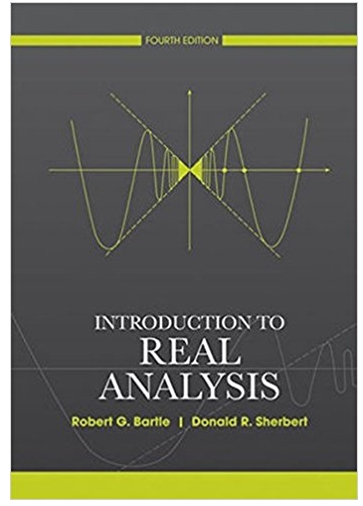Answered step by step
Verified Expert Solution
Question
1 Approved Answer
An outline is the scaffold upon which you build your paper. You probably already use a mental outline when you plan a paper, perhaps without
An outline is the scaffold upon which you build your paper. You probably already use a mental outline when you plan a paper, perhaps without even being aware of it. Writing the outline can give you a visualization of your plan. An outline provides both focus and direction for the paper, shows where relevant points and arguments should be made, and identifies areas where more supportive evidence is needed. What is an annotated outline? As you are writing a research paper, your paper is built around the research findings that you located in your search. When you prepare an annotated outline, you will note the research that supports each section of the paper. This will help you see any areas that need further research to support them. The following example may help support the transition of your paper from a collection of research notes to a fully developed paper. Suppose the research topic you chose was the relation of childhood bullying to self-esteem. The title of your paper is: Self-esteem's relationship to childhood bullying. When researching the paper, you found conflicting research results. Some research showed that children with low self-esteem tended to bully others, while other research showed that children with extremely high self-esteem were bullies. Looking closer, you began to see that this research could be divided into studies investigating different variables, such as gender, age, and ethnic background. Now, you want to turn this into a research report. An annotated outline might look like this (all citations are fictional): Topic: The relationship between childhood bullying and self-esteem: Too much or too little? A. Overview of childhood bullying 1. Definitions of bullying (Simpson, 2010; O'Connor, 2008) 2. Types of bullying (Yang, 2009; Sinisi, 2011) B. Self-esteem in childhood 1. Definitions of self-esteem (Whitefield, 2009) 2. Impact of self-esteem on behavior in childhood (Liebermann, 2010) C. Research on the relation of self-esteem to bullying in childhood 1. Gender, self-esteem, and childhood bullying a.Self-esteem and same gender bullying (1) Self-esteem in boys bullying boys (Pryzborski, 2012) (2) Self-esteem in girls bullying girls b. Self-esteem in opposite gender or non-gender specific bullying in childhood (no research found) 2. Age, self-esteem in childhood bullying a. Self-esteem and bullying from 6-9 (Brennan, 2011) b. Self-esteem and bullying from 9-12 (Mendez, 2010; Lee, 2011) 3. Family structure, self-esteem and childhood children a. Self-esteem and bullying in children in single parent families (Shams, 2012) b. Self-esteem and bulling in children in dual parent families (Mugaddam, 2011) 4. Ethnicity, self-esteem and childhood bullying a. Inter-ethnic bullying and self-esteem (Jacinto, 2009; Akbarzadeh, 2010) b. Intra-ethnic bullying and self-esteem (Lawrence, 2011) D. Conclusions E. Summary and suggestions for future studies Preparing an annotated outline in this way will give you a way to organize and clarify your plans. Additionally, it gives your instructor a chance to provide feedback on the proposed structure of the paper before you begin to write. You can also see which subtopics you need to research further before proceeding with the final draft. Assignment For this task, you will prepare an annotated outline comparing the different types of sampling techniques that you read about in the Jackson and Trochim et al. readings for this week. Headings for the outline should be divided between probability and nonprobability sampling. Each sampling technique should be described, including when it is best to use the particular method, identify the question type for the particular technique, identify the best method to apply to each technique, and list the type of quantitative design that best fits with the sampling technique. Length: 5 - 7 pages Your annotated outline should demonstrate thoughtful consideration of the ideas and concepts presented in the course by providing new thoughts and insights relating directly to the topic. Your response should reflect scholarly writing and current APA standards. Upload your assignment using the Upload Assignment button below. Johnson Chp 4 96-99 Trochim chapter 4 and 7 Jackson, S. L. (2016) Research methods and statistics: A critical thinking approach. Trochim, T.M., Donnelly, J., & Arora, A. (2015) Research methods: The essential knowledge base. McCready, W. (2006). Applying Sampling Procedures. The Psychology Research Handbook. SAGE Publications. http://knowledge.sagepub.com.proxy1.ncu.edu/view/hdbk_psychrsch/n10.xml Mrug, S. (2010). Survey. Encyclopedia of Research Design. Encyclopedia of Research Design. SAGE Publications. http://sk.sagepub.com.proxy1.ncu.edu/reference/researchdesign/n449.xml
Step by Step Solution
There are 3 Steps involved in it
Step: 1

Get Instant Access to Expert-Tailored Solutions
See step-by-step solutions with expert insights and AI powered tools for academic success
Step: 2

Step: 3

Ace Your Homework with AI
Get the answers you need in no time with our AI-driven, step-by-step assistance
Get Started


